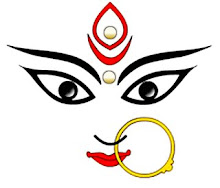 India is a land of beautiful places and one of them is Khajuraho. It is located in the state of Madhya Pradesh. If one takes a look at the map of India one will find Khajuraho is situated right in the heart of Central India. It’s a culturally rich place and a tourist hotspot. In fact, it is one of the favorite destinations for Indian as well foreign tourists. Situated in the heart of Central India, in the state of Madhya Pradesh, Khajuraho is a fascinating village with a quaint rural ambience and a rich cultural heritage. The fascinating temples of Khajuraho, India's unique gift of love to the world, represent the expression of a highly matured civilization. After the Taj it is the most frequently visited monument in India. Khajuraho is a unique example of Indo-Aryan architecture. The Chandela rulers between 950-1050 built these temples. There were 85 temples, which were built, and only 22 of them survive today. The temples are a world heritage site and belong not just to India but to the world. The Archeological Survey of India's dedicated efforts towards their conservation rank them against the best preserved monuments of this antiquity. Most of the temples are built of sandstone in varying shades of buff, pink or pale yellow. They each belong to a different sect, the Shiva, Vaishnava or Jaina Sects, but are often indistingushable from one another to the untrained eye. The temples are lofty with ample walking space separating them. The interior rooms are inter connected and placed in an East/West line. Each contains an entrance, a hall, a vestibule and a sanctum. Windows were added to the larger temples to add a feeling of space and light. Unlike other temples Khajuraho temples are said to have a theme [women], which comes in front while going through the temples. A celebration of womankind, her myriad moods and facets. There are carvings of a woman writing letter, applying makeup to her eyes, combing her tresses, dancing, and playing with her child. Innocent, coquettish, smiling, seductive, passionate and beautiful, all depicted in intricate detail, sharply etched, sculpted with consummate skill. One opinion says Chandelas were followers of the tantric cult, which believes that gratification of Earthly desires is a step towards attaining the infinite liberation, Nirvana.  In the temple architecture of India, the Khajuraho complex remains unique. One thousand years ago, under the generous and artistic patronage of the Chandela Rajput kings of Central India, 85 temples, magnificent in form and richly carved, came up on one site, near the village of Khajuraho. The amazingly short span of 100 years, from 950 AD - 1050 AD, saw the completion of all the temples, in an inspired burst of creativity. Today, of the original 85, only 22 have survived the ravages of time; these remain as a collective paean to life, to joy and to creativity; to the ultimate fusion of man with his creator. Why did the Chandelas choose Khajuraho or Khajirvahila - garden of dates, as it was known then - as the site for their stupendous creations ? Even in those days it was no more than a small village. It is possible given the eclectic patronage of the Chandelas and the wide variety of beliefs represented in the temples, that they had the concept of forming a seat of religion and learning at Khajuraho. It is possible that the Chandelas were also believers in the powers of Tantrism; the cult which believes that the gratification of earthly desires is a step closer to the attainment of the infinite. It is certain however, that the temples represent the expression of a highly matured civilization. Yet another theory is that the erotica of Khajuraho, and indeed of other temples, had a specific purpose. In those days when boys lived in hermitages, following the Hindu law of being "brahmacharis" until they attained manhood, the only way they could prepare themselves for the worldly role of 'householder' was through the study of these sculptures and the earthly passions they depicted. THE LEGEND Khajuraho or ‘Khajur-vahika’ [bearer of date palms], also known as ‘Khajjurpura’ in ancient times, evidently derives its name from the golden date palms [khajur] that adorned its city gates and, if the different legendary versions are to be believed, it owes its existence to an enchanting maiden named Hemvati. According to the account of the medieval court poet, Chandbardai, in the Mahoba-khand of his Prithviraj Raso, Hemvati was the beautiful daughter of Hemraj, the royal priest of Kashi [Varanasi]. One summer night, while she was bathing in the sparkling waters of a lotus-filled pond, the Moon god was so awestruck by her beauty that he descended to earth in human form and ravished her. The distressed Hemvati, who was unfortunately a child widow, threatened to curse the god for ruining her life and reputation. To make amends for his folly the Moon god promised that she would become the mother of a valiant son. ‘Take him to Khajjurpura’, he is believed to have said. ‘He will be a great king and build numerous temples surrounded by lakes and gardens. He will also perform a yagya [religious ceremony] through which your sin will be washed away.’ Following his instructions, Hemvati left her home to give birth to her son in a tiny village. The child, Chandravarman, was as lustrous as his father, brave and strong. By the time he was 16 years old he could kill tigers or lions with his bare hands. Delighted by his feats, Hemvati invoked the Moon god, who presented their son with a touchstone which could turn iron into gold, and installed him as king at Khajuraho. Chandravarman achieved a series of brilliant victories and built a mighty fortress at Kalinjar. At his mother’s request he began the building of 85 glorious temples with lakes and gardens at Khajuraho and performed the bhandya-yagya which expunged her of her guilt. A variation of the same legend introduces Hemvati as the widowed daughter of Mani Ram, the royal priest of Kalinjar. As a result of a mistake in his calculations the priest informed his king that a particular night was Puranmasi [full moon night] and not the dark night that it actually turned out to be. In her concern for her father’s reputation the beautiful Hemvati prayed to the Moon god, who was gracious enough to uphold the word of the priest but, inreturn for his favour, ravished the daughter. The grieving father was so shame-stricken that he cursed himself and turned into a stone, which was later worshipped by the Chandelas as Maniya Dev. Hemvati gave birth to a son, the sage Chandrateya, who was later at the helm of the Chandela clan. Historically speaking, the area and aura around Khajuraho has always been renowned for its cultural achievements. Architecture The most famous thing in Khajuraho is Khajuraho temples. These temples are astonishing display of Indian architecture. Exquisite is the word you will be forced to say while looking at these temples. The temples were built during the period of Chandela Empire. These temples present life of people and especially women during 11 th century The Khajuraho group of monuments has been registered as a UNESCO World Heritage Site. Built during 950 and 1050 AD, Khajuraho temples are known for erotic sculptures. Beautifully carved and aesthetically beautiful, these sculptures will mesmerize you. A good number of medieval Hindu and Jain temples are located in this beautiful place.
Khajuraho temples were discovered during 20 th century and it is one of the most preserved heritage site. Most of these temples are built of sandstone and the colors used are pale yellow, pink and buff in shades.
These temples are dedicated to Hindu deities like Brahma, Vishnu and Mahesh apart from few Devi forms. Temples of Khajuraho represent highly matured Indian civilization in 11th century. Khajuraho is a place that screams to be visited because of its historic importance. How to get to the Temple:
By Air - Khajuraho has its own airport from where daily fights link it to major Indian cities including Delhi, Agra, Varanasi and Kathmandu.
By Rail - The nearest railway stations are at Mahoba [64 km] and Harpalpur [94 km]. Satna [117 km] is the arrival place for tourists coming in from Delhi, Mumbai, Kolkata, Chennai, Agra and Varanasi. By Road - Regular bus services connect Khajuraho to neighbouring cities including Mahoba, Harpalpur, Satna, Jhansi, Gwalior, Agra etc.
Accommodation
There are some popular hotels in Khajuraho like Hotel Taj Chandela, Hotel Clarks, Hotel Jass Trident, Hotel Usha Bundela, Hotel Holiday Inn and Hotel The Grand Temple View. These hotels are sure to give you a comfortable stay during your visit to this temple.
|
15 November 2010
Tantra Temples in India - Khajuraho Temples, Madhya Pradesh
Subscribe to:
Post Comments (Atom)



























1 comment:
Hello, This is wonderful and amazing information provided by this site....it is not only informic but also discloses many facts which i never known before....like khajuraho city having airport linked with major cities of India...thanks for this information....being a traveler, i would like to share important information to all viewers that there is a Balaji temple near buldhana district of Maharashtra state......this is the replica of Tirupati Balaji .....every god balaji lover must visit this wonderful temple....
Post a Comment